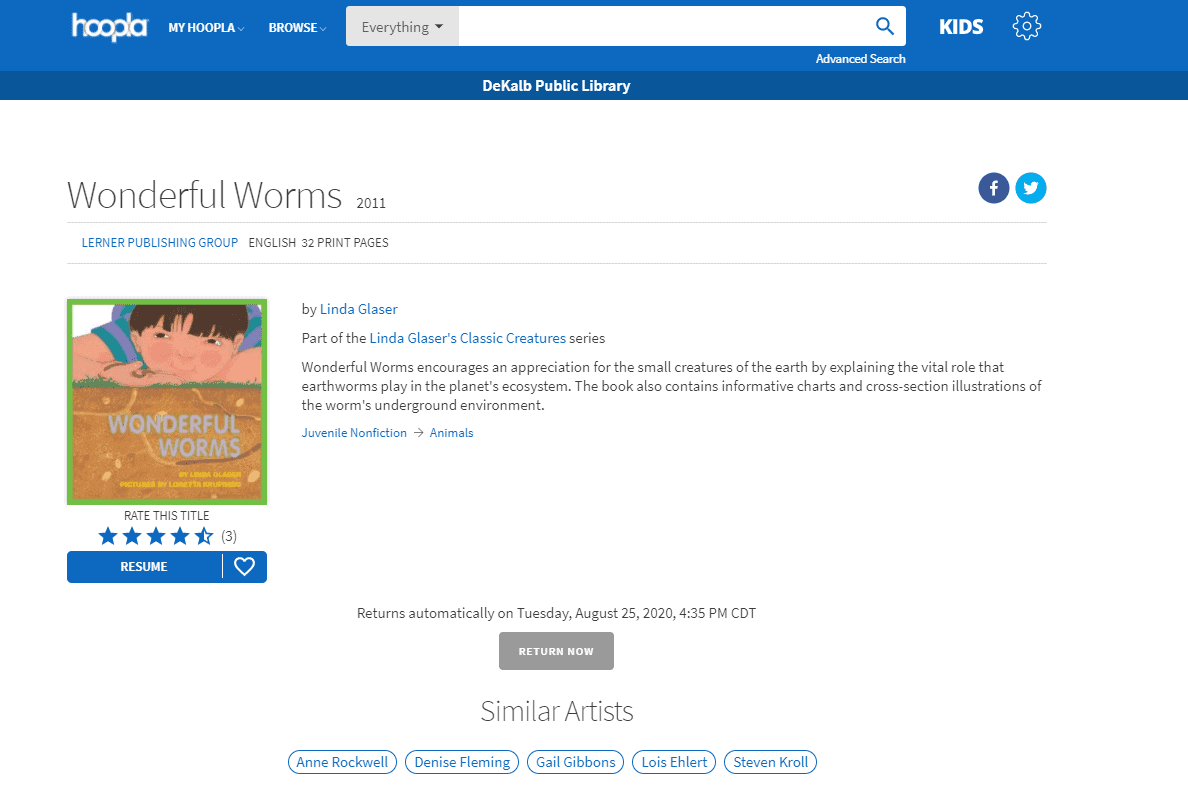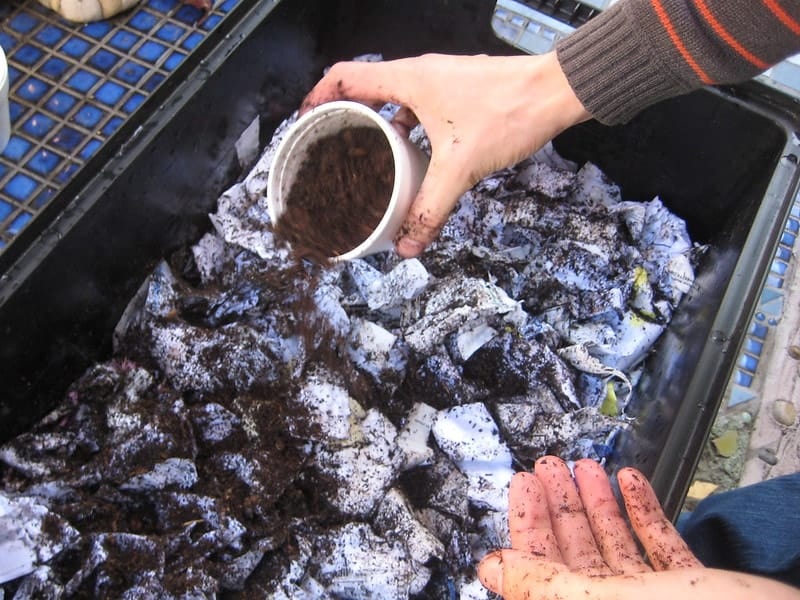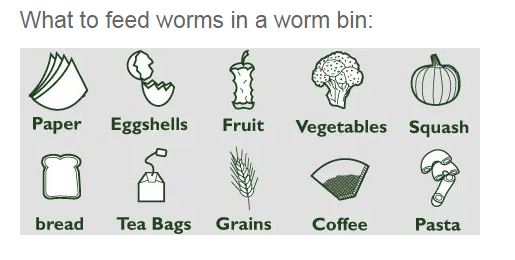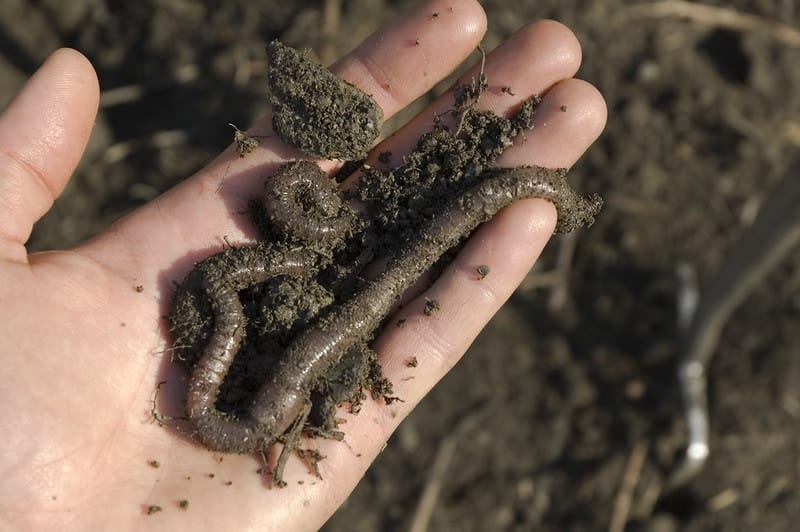Did you know you can raise worms AND they can make compost for your garden? This project can take a while (worms are garden superheroes, but they are slow superheroes), so start now to get ready for next spring.
Parents, this could be a good project to do at home this fall or winter if you are homeschooling (temporarily or permanently), or just looking for fairly easy STEM activities to supplement your child’s schooling. You can do it completely at home, and keep it going during the winter, when it can be hard to find outdoorsy things to do in cold DeKalb, IL!
Before you begin, learn a bit about worms. One great way to check out a book on Hoopla called Wonderful Worms. This book has a good introduction to worms and how special they are. You can access this book for FREE with your DeKalb Public Library card.

It’s important to note, when you have a worm farm, especially a working worm farm that is composting for you, you cannot use normal worms you dig up in your garden. They won’t eat food scraps well in a bin. You’ll want to order Eisenia fetida (red wigglers) or Lumbricus rubellus (redworms). Many places sell these types of worms online for about $30-$40 a pound. These types of worms like to hang out in bins, turning your food scraps into plant-helping worm poop. The good news is the worms reproduce, so you should never have to buy worms again.
There are lots of instructions online, but I think these are especially good: Cheap and Easy Worm Bin.

Basically, you get a plastic bin, drill holes in it, put down some bedding for worms (slightly wet newspaper + dirt), and add your worms! Give your worms food scraps to eat, especially fruit and vegetable scraps. This chart from Naturesfootprint.com gives a good overview of what to feed worms:

When the bin is full, you can harvest your vermicompost. There are instructions many places online, but good ones are in the Cheap and Easy Worm Bin instructions. Put your harvest on your plants inside, or save it for your garden in the spring.
Finally, remember to say “thank you!” to your composting friends, your pet worms!

